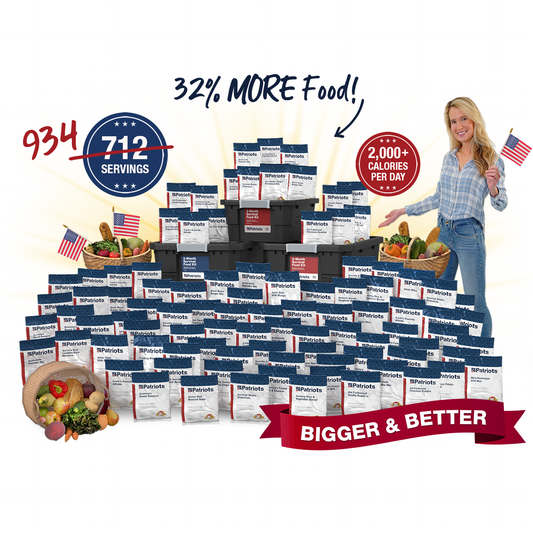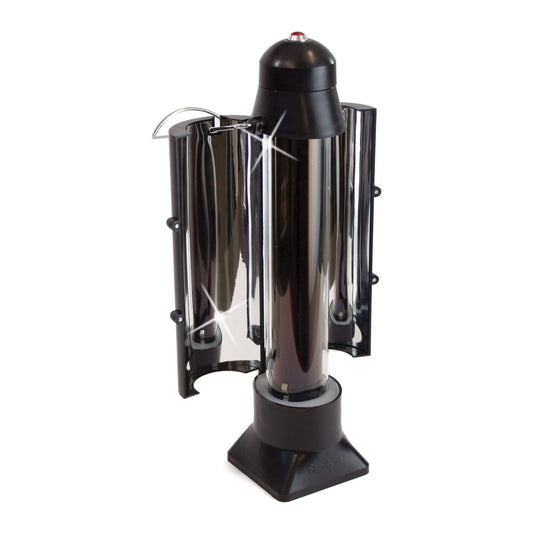
Texas Is Suffering Through Food Bank Shortages

We could see this one coming a mile away.
Prior to Thanksgiving last year, food industry experts predicted that the nation’s food banks could run out of food before long.
Due mainly to the ongoing coronavirus pandemic and its ramifications, the problem got even worse by Christmas.
Many hungry Americans were depending on food pantries for their holiday meals. Some food banks came up with enough to take care of those needs. But the effort wiped out their supplies.
In 2020, the number of Americans experiencing food insecurity rose from less than 18 million to more than 22 million. That’s according to the U.S. Census Bureau’s Household Pulse Survey. Now it’s up to 35 million, according to Feeding America.
Six-Fold Problem
It’s been a horrible time for food banks. For one, less food is being donated. Due to businesses closing and people losing jobs. Two, more people than ever are counting on food pantries for their meals. Including many who lost employment.
Three, the food supply chain itself has been affected. With workers becoming ill and having to take time off, less food gets produced and distributed.
Four, the number of food bank volunteers has dwindled. Some volunteers are concerned about exposure to the virus. Especially older ones. Five, food prices have risen. Nonprofit groups can’t buy as much food as before.
And six, extreme weather has destroyed produce grown specifically to supply food pantries.
Winter Storm Uri Wreaked Havoc
The weather problem has been especially brutal in Texas. As I’m sure you remember, the Lone Star State was hit with snow, ice and extreme cold in February.
Historic Winter Storm Uri resulted in at least 31 deaths and many hospitalizations. More than 5 million homes and businesses lost electrical power.
All due to record-breaking frigid temperatures. And a killer storm featuring snow and ice. On February 15, it was colder in Houston, Texas than it was in Houston, Alaska.
Now, more than 2.6 million households in Texas say they sometimes or often don’t have enough to eat.
Pandemic Exacerbates the Issue
Food banks in Texas are used to sudden increases in demand. Especially during and following heat waves, hurricanes and flooding.
But with the pandemic, it’s been an increasing and ongoing need for more than a year.
Eric Cooper is president and CEO of the San Antonio Food Bank. “(The virus) was a disaster that was staying around,” he said. “It wasn’t just coming and going as many of the disasters in Texas.”
Even before Uri, thousands of cars would line up for food in San Antonio. Families would wait hours for bags of beans, canned goods, fresh produce and milk.
‘St. Valentine’s Day Massacre’
And then the storm hit on Valentine’s Day. Power outages and water outages forced people to sleep in freezing homes and cars.
Farmers lost crops. Orange and grapefruit trees were destroyed. Millions of gallons of milk had to be dumped out.
One farmer told CNN, “We have fields (of cabbage and onions) that didn’t survive and we’ve already plowed them up.”
A Texas trade association president said, “The timing of this freeze could not have come at a worse time.” He described it as the “St. Valentine’s Day massacre.”
Produce Destruction Hurts Pantries
Sid Miller is the Texas Agriculture Commissioner. He said, “People don’t realize how devastating this was to agriculture. Food banks are the recipient of that. It’s a ripple effect.”
The destruction of produce comes at a time when food banks are trying to supply people with healthier foods.
Celia Cole, CEO of Feeding Texas, said their goal is to make fresh fruits and vegetables at least one-half of the food being distributed to the community.
Some growers who normally contribute produce to food pantries won’t be able to this year. Texas food banks are reaching out to other states. But the cost of bringing in fresh foods is high.
A Nationwide Dilemma
And, of course, the food bank problem is not limited to Texas.
Ellen Vollinger is legal director at the Washington, D.C.-based Food Research and Action Center. She said this. “It’s not surprising to see so many ‘new needy.’ Even before the pandemic, millions of working Americans were living on the edge of poverty.”
Pam Denholm is executive director of the Weymouth Food Pantry in Massachusetts. She said, “The demand has increased dramatically. All across America, we have these middle-class communities that are being deeply affected.”
At the nearby Medway Village Church Pantry, the situation is similar. “We have seen so many new families coming in,” said director Susan Dietrich.
“Probably the most difficult thing I’ve seen throughout this pandemic are the families that come and bring their children. Mom’s struggling… She’s trying to make sure she can continue to put food on the table. That’s something that really hits you.”
Feeding the Hungry
People who require food assistance should contact local food banks, pantries or soup kitchens.
Other options are local churches, faith-based groups and the Salvation Army. Seniors and the disabled can register for Meals on Wheels.
And those who have been blessed with more than enough should look for ways to provide for those in need.
There’s no better feeling than knowing you’ve helped feed a hungry person.
Featured Products
- Regular price
- $699.95
- Regular price
-
- Sale price
- $699.95
- Unit price
- per
- Regular price
- $2,999.95
- Regular price
-
- Sale price
- $2,999.95
- Unit price
- per
- Regular price
- From $29.95
- Regular price
-
- Sale price
- From $29.95
- Unit price
- per
- Regular price
- $3,499.95
- Regular price
-
- Sale price
- $3,499.95
- Unit price
- per
- Regular price
- From $29.95
- Regular price
-
- Sale price
- From $29.95
- Unit price
- per
- Regular price
- $2,499.95
- Regular price
-
- Sale price
- $2,499.95
- Unit price
- per
- Regular price
- $499.95
- Regular price
-
- Sale price
- $499.95
- Unit price
- per
- Regular price
- $999.95
- Regular price
-
- Sale price
- $999.95
- Unit price
- per
- Regular price
- From $29.95
- Regular price
-
- Sale price
- From $29.95
- Unit price
- per
- Regular price
- $2,999.95
- Regular price
-
- Sale price
- $2,999.95
- Unit price
- per
- Regular price
- From $2,796.95
- Regular price
-
$8,390.95 - Sale price
- From $2,796.95
- Unit price
- per
- Regular price
- $4,999.95
- Regular price
-
- Sale price
- $4,999.95
- Unit price
- per
- Regular price
- From $129.95
- Regular price
-
$259.95 - Sale price
- From $129.95
- Unit price
- per
- Regular price
- $847.95
- Regular price
-
$897.95 - Sale price
- $847.95
- Unit price
- per
- Regular price
- $1,999.95
- Regular price
-
- Sale price
- $1,999.95
- Unit price
- per
- Regular price
- $279.95
- Regular price
-
- Sale price
- $279.95
- Unit price
- per
- Regular price
- From $69.95
- Regular price
-
- Sale price
- From $69.95
- Unit price
- per
- Regular price
- $29.95
- Regular price
-
- Sale price
- $29.95
- Unit price
- per
- Regular price
- $849.95
- Regular price
-
- Sale price
- $849.95
- Unit price
- per
- Regular price
- $249.95
- Regular price
-
- Sale price
- $249.95
- Unit price
- per
- Regular price
- $199.95
- Regular price
-
- Sale price
- $199.95
- Unit price
- per
- Regular price
- $129.95
- Regular price
-
- Sale price
- $129.95
- Unit price
- per
- Regular price
- $114.95
- Regular price
-
- Sale price
- $114.95
- Unit price
- per
- Regular price
- $69.90
- Regular price
-
- Sale price
- $69.90
- Unit price
- per
- Regular price
- $19.95
- Regular price
-
- Sale price
- $19.95
- Unit price
- per
























